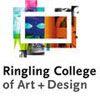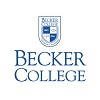
| Ranking | School | % of Schools Considered |
|---|---|---|
| 1 | University of Southern California | Top 2% |
| 2 | Carnegie Mellon University | Top 3% |
| 3 | New York University | Top 4% |
| 4 | Rochester Institute of Technology | Top 5% |
| 5 | DigiPen Institute of Technology | Top 7% |
| 6 | Massachusetts Institute of Technology | Top 8% |
| 7 | Southern Methodist University | Top 9% |
| 8 | DePaul University | Top 10% |
| 9 | Rensselaer Polytechnic Institute | Top 15% |
| 10 | Savannah College of Art and Design | Top 15% |
| 11 | Drexel University | Top 15% |
| 12 | Gnomon School of Visual Effects | Top 15% |
| 13 | Northeastern University | Top 20% |
| 14 | Columbia College Chicago | Top 20% |
| 15 | Full Sail University | Top 20% |
| 16 | The New School/Parsons | Top 20% |
| 17 | Ringling College of Art and Design | Top 25% |
| 18 | Academy of Art University | Top 25% |
| 19 | Worcester Polytechnic Institute | Top 25% |
| 20 | University of Pennsylvania | Top 25% |
| 21 | Otis College of Art and Design | Top 30% |
| 22 | University of Denver | Top 30% |
| 23 | Becker College | Top 30% |
| 24 | Laguna College of Art and Design | Top 30% |
| 25 | Cornell University | Top 30% |
Our 2019 rankings of the Top 25 Private Game Design School Programs in the US. For an explanation of ranking criteria, click here.
 1. University of Southern California, Los Angeles, California (top 2% of schools considered)
1. University of Southern California, Los Angeles, California (top 2% of schools considered)
Established in 1880, University of Southern California (USC) serves 20,000 undergraduate students and 27,500 graduate students enrolled in more than 500 programs and over 150 minors. Program options for aspiring game designers are offered through Viterbi School of Engineering’s Department of Computer Science and the Dornsife College of Letters, Arts & Sciences’ Interactive Media & Games Division. Dornsife programs are offered in conjunction with the School of Cinematic Arts.
Viterbi School of Engineering offerings include a BS in Computer Science (Games), an MS in Computer Science (Game Development), and a PhD in Computer Science with a Game Design and Development or Virtual Reality research area. A Minor in Computer Science and a Progressive Degree Program (PDP) are also available.
The PDP allows exceptional undergraduate students to “start graduate-level classes during their senior year and request a reduction in the units required for the Master’s degree.” This “allows students to earn the MS in Computer Science with one or two additional semesters of study.” The PDP is available for the MS in Computer Science (Game Development).
The Interactive Media & Games Division offers a BA in Interactive Entertainment, an intensive three-year MFA in Interactive Media and an MFA in Interactive Media (Games and Health), and an MA in Cinematic Arts (Media Arts, Games and Health). The Division’s extensive list of minors includes Game Design, Game Animation, Game Audio, Game Entrepreneurism, Game User Research, Themed Entertainment, Video Game Design and Management, Video Game Programming, 3D Computer Modeling and Graphics, and Computer Science.
In addition to a wide variety of program options for aspiring game designers, USC is home to the GamePipe Laboratory. Sponsored by Intel, Sony, and other technology companies, the Lab produces a "Demo Day," which allows students to showcase their work. The semiannual event attracts game industry reps, reporters, faculty, students, and hundreds of spectators from across the country.
 2. Carnegie Mellon University, Pittsburgh, Pennsylvania (top 3% of schools considered)
2. Carnegie Mellon University, Pittsburgh, Pennsylvania (top 3% of schools considered)
Founded in 1900, Carnegie Mellon University (CMU) serves 14,625 students representing more than 100 countries. The school has over 100 programs across seven colleges. In collaboration with the School of Computer Science-Computer Science Department and the College of Fine Arts-Integrative Design, Arts and Technology (IDeATe), CMU offers a Bachelor of Computer Science and Arts (BCSA) with a Concentration in Game Design. The School of Art offers a BFA with a Concentration in Time Based Media.
IDeATe Collaborative Studios include Game Engine Programming offered by the Robotics Institute, Research Issues in Game Development offered by the Entertainment Technology Center (ETC) at CMU, and Programming for Game Designers—also offered by the ETC.
The BFA Program offers focus areas such as Game Arts, Animation, Bioart, Computational and Interactive Art, Tangible Media, Video and Performance, and Tactical Media. Per the school, "students particularly interested in the intersection of art and technology can take advantage of expanded course offerings through the IDeATe Program.”
Head over to ETC at CMU where you will find two additional game design options. Founded in 1998, ETC offers Game Design Minor (in collaboration with IDeATe) and a Masters of Entertainment Technology (MET). The MET is jointly conferred by CMU’s School of Computer Science and the College of Fine Arts. MET is currently considered a terminal degree.
 3. New York University (NYU) Tisch School of the Arts, New York, New York (top 4% of schools considered)
3. New York University (NYU) Tisch School of the Arts, New York, New York (top 4% of schools considered)
Founded in 1965, Tisch School of the Arts is part of New York University (NYU) and home to the NYU Game Center, Department of Game Design. Also known as Tisch or TSOA, the school serves more than 3,000 students from 48 states and 39 countries. Tisch students are enrolled in games, animation, film, interactive media, acting, dance, design, performance, writing for musical theatre, stage, screen & television, preservation, recorded music, photography, and public policy programs at the BA, BFA, MA, MFA, MPS and PhD levels.
The NYU Game Center, Department of Game Design offers several programs for aspiring game designers. Options include a Game Design BFA or MFA and a Minor in Game Design. The BFA program is organized into three primary areas including Game Studies, Game Design, and Game Development, and four production areas including Programming, Visual Design, Audio Design, and Game Business. Students may specialize in Game Programming, Visual or Audio Design, or Game Development.
The Game Center MFA is a two-year degree that includes classes in Game Design, Game Production, Game Studies, and Game History. Students will gain hands-on experience by taking studio courses and participating in play labs, and electives will allow students to “explore everything from Game Journalism to Games and Players (a class on the psychology and emotions of game play).”
Classes and events for all Game Center programs take place at the Media and Games Network (MAGNET) at the NYU Brooklyn campus. MAGNET also houses the Game Center Open Library, which is "the largest collection of games held by any university in the world."
 4. Rochester Institute of Technology, Rochester, New York (top 5% of schools considered)
4. Rochester Institute of Technology, Rochester, New York (top 5% of schools considered)
Rochester Institute of Technology (RIT) was founded in 1885 as Mechanics Institute. When it opened, the school offered mechanical drawing, which eventually attracted more than 400 students. The institute adopted the name Rochester Institute of Technology in 1944 and awarded its first bachelor of science degree in 1955. Today, RIT serves nearly 19,000 students majoring in everything from everything from 3D Digital Design and Games to Web and Mobile Computing.
The B. Thomas Golisano College of Computing and Information Sciences (GCCIS) houses the School of Interactive Games & Media (IGM). Here students can earn a BS or MS degree in Game Design and Development, or a BS in New Media Interactive Development. Minors in Game Design & Development (GAMEDD-MN) and Game Design (GAMED-MN) are also available.
The GCCIS IGM Game Design and Development program emphasizes game programming and cooperative education (co-op). The co-op is a required, full-time paid work experience that provides students with an opportunity to learn on the job in real-world industry settings. Students must complete two semesters, full-time, which amounts to a minimum 35-hour work week over the course of an academic semester. Past co-op companies include Microsoft, Sony Interactive Entertainment, Sapient-Razorfish, Google, EA, Epic Games, Cartoon Network, Seagate, Hi-Rez Studios, and many others.
In addition to the co-op experience, students in the BS in New Media Interactive Development program will explore casual games, physical computing, production, web, mobile, and more. All GCCIS IGM students have the opportunity to take any minor or enroll in a double major.
 5. DigiPen Institute of Technology, Redmond, Washington (top 7% of schools considered)
5. DigiPen Institute of Technology, Redmond, Washington (top 7% of schools considered)
DigiPen Institute of Technology was founded in 1988. The school serves around 1,100 students from across the U.S. and nearly 50 countries. Ten graduate and undergraduate program options are available in the areas of Art, Design, and Computer Science. Programs for aspiring game designers are offered through the Department of Game Software Design and Production.
Pathways include a BA in Game Design, a BS in Computer Science and Game Design, a BS in Computer Science in Real-Time Interactive Simulation (BS in RTIS), a five-year BS in RTIS/MS in Computer Science, and a Minor in Game Design.
Although the BS in RTIS offers “extensive training in mathematics and physics,” says DigiPen, students in the program also “work both individually and collaboratively to learn the fundamentals of Game Design, Production, and Programming. Additionally, they write game design documents and technical design documents, learn how to schedule tools and techniques, and participate in the full production of several games.”
DigiPen student games have won 57 Independent Games Festival awards (more than any other school) and to date, more than 550 companies around the world have hired DigiPen graduates. DigiPen alumni have been credited on more than 1,000 commercial game titles.
 6. Massachusetts Institute of Technology (MIT), Cambridge, Massachusetts (top 8% of schools considered)
6. Massachusetts Institute of Technology (MIT), Cambridge, Massachusetts (top 8% of schools considered)
Massachusetts Institute of Technology (MIT) was founded 1861. The school serves nearly 11,500 students enrolled in more than 100 programs across five schools including the School of Architecture and Planning, the School of Engineering, the School of Humanities, Arts, & Social Sciences (HASS), MIT Sloan School of Management, and the School of Science. Massachusetts Institute of Technology is also home to the MIT Game Lab, the MIT Education Arcade, and the Singapore-MIT GAMBIT Game Lab.
Together, the labs provide the opportunity to study, design, and develop games as a supplement to several degree programs. This means that students who are interested in games can create their own program of study. Students may choose the BS or MS in Comparative Media Studies (CMS) with a Games and Interactive Media “Cluster.” BS and MS degrees in Computer Science and Engineering are also available.
Electrical Engineering and Computer Science offers an extensive graduate program in Computer Science, which allows students to “study and participate in active research of aspects in computer science that are vital in the creation of modern digital games, such as artificial intelligence, networking, and computer graphics.” Minors in CMS with Games and Interactive Media and Computer Science are also available. The CMS programs are available through the HASS Department of Comparative Media Studies/Writing.
Other unique degree pathways include a BS in Brain & Cognitive Science for those interested in psychological games and behavioral change and a BS in Business for those interested in studying business practices required for creating their own game company. The BS in Brain & Cognitive Science is offered through the MIT Department of Brain and Cognitive Sciences and the BS in Business is offered through MIT Sloan School of Management.
 7. Southern Methodist University, Dallas, Texas (top 9% of schools considered)
7. Southern Methodist University, Dallas, Texas (top 9% of schools considered)
Founded in 1911, Southern Methodist University (SMU) serves nearly 11,800 students enrolled in 261 degree programs through seven schools. The Meadows School of the Arts offers several programs for aspiring game designers. Programs include a BFA in Art/Masters of Interactive Technology (M.I.T) in Digital Game Development.
The BFA/M.I.T is supported by the Guildhall—SMU’s School of Video Game Development (est. 2003). Per the school, “this program provides the breadth and rigor of a BFA degree, which will develop skills supportive of the in-depth investigation of digital game development fundamentals through the curriculum of the Master of Interactive Technology.”
BFA/M.I.T and M.I.T Specializations include Art, Design, Production, or Programming for Games. In addition to the M.I.T in Digital Game Development, the Guildhall offers a Professional Certificate in Digital Game Development “tailored to students who wish to become actively involved in the game development industry as designers or artists.” Specializations for the program include Art Creation, Level Design, Production, and Software Development.
 8. DePaul University, Chicago, Illinois (top 10% of schools considered)
8. DePaul University, Chicago, Illinois (top 10% of schools considered)
DePaul University (est. 1898) offers 300 programs of study across 10 colleges and schools and two campuses in Chicago. The school serves nearly 22,500 students from across the U.S. and about 70 countries. One of the first universities to offer a game development course for smartphones, DePaul offers game design programs at all levels through the College of Computing and Digital Media (CDM).
CDM is organized into three schools including the School of Cinematic Arts (SCA), the School of Computing (SoC), and the School of Design (SoD). Degree options include a BS and a Minor in Game Design and Game Programming, a BS in Computer Science with a Game Systems Concentration, an MS in Game Programming, and an MFA in Game Design. The Minors are jointly offered by CDM SoD and SoC.
DePaul University also offers a Game, Cinema, and Animation Summer Academy and the DePaul Game Experience (DGE). The Summer Academy is a weeklong program that features “hands-on instruction using the latest equipment and technology.” Participants may focus on Computer Game Development, 3D Computer Modeling and Animation for Games and Cinema or Digital Cinema Production.
The DePaul Game Experience (DGE) allows a select group of students to work on a game to submit to the Student IGF Competition. Past DGE teams have made entries that were finalists in the IGDA student competition.
Students in all Game Design programs have access to the Deep Games Laboratory and all CDM labs, including several that intersect with the program specifically, including game development and research, gameplay, virtual reality, and playtest and usability labs. The Deep Games Laboratory is a cross-disciplinary design, research, development, and assessment game lab housed in CDM that focuses on games exploring the human experience.
Recent DePaul Game Program graduates have gone on to work at Disney Interactive Studios, NeatherRealm Studios, Owlchemy Labs, Firaxis, Wargaming, Phosphor Games, Carbine Studios, Scientific Games, and many others. Several grads have gone on to form their own gaming companies, including Young Horses, whose indie hit Octodad was developed at DePaul.
 9. Rensselaer Polytechnic Institute, Troy, New York (top 15% of schools considered)
9. Rensselaer Polytechnic Institute, Troy, New York (top 15% of schools considered)
Founded in 1824, Rensselaer Polytechnic Institute (RPI) is the oldest technological research university in the U.S. The school serves nearly 8,00 students enrolled in more than 145 programs across five schools including Architecture, Engineering, Humanities, Arts and Social Sciences (HASS), Lally School of Management, and Science. Programs for aspiring designers are offered through HASS and include a BS in Games and Simulation Arts and Sciences (BS GSAS) and a BS in Electronic Media, Arts, & Communication (EMAC).
BS GSAS students may choose a concentration or dual BS degree from the following options: Arts (Electronic Arts), Human Computer Interaction (HCI), Computer Science, Management/Entrepreneurship, Cognitive Science, or Writing for Games.
Established in 1996, the BS in EMAC program is an interdisciplinary program that includes courses in communication as well as in digital art and animation, video, electronic music, and graphic design, supported by RPI’s strong technological infrastructure. The EMAC curriculum offers concentrations in Digital Storytelling (Animation, Video, Game Design), Graphic Design, Interaction Design, Marketing Communication and Design, Sound Design and Popular Culture.
RPI also offers several advanced degree programs for game designers. Graduate offerings include MFA and PhD degrees in Electronic Arts (EART). Offered through the Department of Arts, both degree programs allow students to explore everything from Gaming and Animation to Communication Technologies.
Students may enhance their education by adding a minor, dual major, study abroad, internship, or even a co-terminal graduate program.
 10. Savannah College of Art and Design, Savannah, Georgia (top 15% of schools considered)
10. Savannah College of Art and Design, Savannah, Georgia (top 15% of schools considered)
Savannah College of Art and Design (SCAD) was founded in 1978. With campuses in Savannah, Atlanta, Hong Kong, and Lacoste, France, SCAD is home to nearly 13,000 students from around 50 states and 115 countries. The school offers more than 40 majors and 60-plus minors, including game design. Programs are offered through the School of Digital Media and include a BA with a Concentration in Interactive Design and BFA, MA and MFA degrees in Interactive Design and Game Development (IDGD).
Minors in Concept Art for Games, Concept Design for Animation and Games, Games UX, Interactive Design and Game Development, and Mobile and Interactive Design are also available.
The 180 credit hour BA is available at the Savannah, Atlanta, and eLearning campuses. This program requires 45 credit hours in the concentration including courses such as Digital Design Aesthetics, Core Principles: Programming, Introduction to Game Design, Core Principles: Interactive Design and Typography I: Anatomy, Form and Space.
The 180 credit hour BFA is offered in Savannah, Atlanta, and Hong Kong. The program requires 75 credit hours in the major including courses such as Interactive Design and Game Development Studio I & II, Interactive Design and Game Development Postproduction, and Programming. Students in the BFA program will choose between two concentrations: Game Development and Interactive Design and Physical Computing. Sample courses include Game Tech, Game Art, User-Centered Design, and Visual Design for Interactive Media.
Offered at the Savannah and Hong Kong campuses, the MA consists of 45 credit hours of study including courses such as Contemporary Art, Interactive Web Design, and Collaboration. Students in this program will complete an Interactive Design and Game Development MA Final Project.
The MFA program consists of 45 credit hours of study including courses such as Environment for Games, Character Development, Scripting for Interactivity, and Game Design Documentation. Students will also take Thesis Studio I & II, and they will complete a Graduate Internship. The MFA program is offered at the Hong Kong and Savannah campuses and through eLearning.
At SCAD, professionals visit with students every quarter, interviewing for positions and reviewing portfolios. Recent visitors include representatives from Zynga, Blizzard Entertainment, Electronic Arts, Crystal Dynamics and Activision. Graduates have been recruited by Epic Games, Sucker Punch Productions, Firaxis Games, and many others.
 11. Drexel University, Philadelphia, Pennsylvania (top 15% of schools considered)
11. Drexel University, Philadelphia, Pennsylvania (top 15% of schools considered)
Drexel University was established in 1891. It serves nearly 29,000 students enrolled in over 200 degree programs across 15 colleges and schools. The College of Computing & Informatics offers several programs for aspiring game designers including a BS in Computer Science (BSCS) and a BA in Computer Science (BACS). Both programs offer a Concentration in Game Programming and Development (GMPD) and the school lists Game Development and Design and Artificial Intelligence Concentrations. A Minor in Interactive Digital Media is also available.
The Westphal College of Media Arts & Design also offers several programs for aspiring game designers. Programs include BS degrees in Game Art and Production and Game Design & Production, and MS and PhD degrees in Digital Media. The two-year MS program features comprehensive studies in Gaming and Digital Media History, Theory and Methods, 3D Modeling, Interactivity, and Animation.
A final option is for students interested in teaching game design. The School of Education offers a Graduate Certificate in Learning in Game Based Environments. All students have access to Drexel Game Design and the RePlay Lab. DGD and RePlay are collaborative efforts between the Digital Media program (in the Westphal College of Media Arts & Design) and the Computer Science department (in the College of Computing and Informatics).
 12. Gnomon School of Visual Effects, Hollywood, California (top 15% of schools considered)
12. Gnomon School of Visual Effects, Hollywood, California (top 15% of schools considered)
Gnomon School of Visual Effects was established in 1997. The campus is located in Hollywood, California, within the Television Center Studio lot. Per the school, “classrooms have been designed to cultivate creativity and learning by mimicking the environments of real production studios.” The schools “30,000 square foot facility has nine state-of-the-art computer labs, a green screen stage, two cycloramas, dedicated sculpture labs, a drawing studio, lecture spaces, student lounges, a student store, and the Gnomon Gallery.”
With more than 600 graduates to date, Gnomon offers a three- or four-year Digital Production BFA and a two-year Digital Production Certificate. The BFA program “covers all aspects of a 3D generalist skillset, providing an in-depth understanding of the 3D production pipeline, visual arts, and general education studies.” The two-year pathway is an “intensive program, built on a 3D generalist foundation, offering emphasized studies in games, modeling and texturing, visual effects, or character and creature animation.”
Gnomon also offers single courses such as Game Creation, Game Design, Anatomy of Games, Animation for Games, Character Creation for Games, Creature Design, Texturing and Shading for Games, Digital Sculpting, Visual Effects for Games, Props and Weapons for Games, Hard Surface Modeling, Photoshop for Digital Production, and Introduction to 3D with Maya. Students can mix and match courses to meet their career goals, and some courses are available 100% online.
Gnomon graduates have gone on to work with Blizzard Entertainment, Digital Domain, Disney Interactive Media Group, Electronic Arts, ILM, PlayStation, ZeniMax Online Studios, and many others.
 13. Northeastern University, Boston, Massachusetts (top 20% of schools considered)
13. Northeastern University, Boston, Massachusetts (top 20% of schools considered)
Northeastern University was established in 1898. The school serves more than 26,000 students enrolled in over 150 undergraduate majors and concentrations and more than 125 graduate programs, across nine colleges and schools. Programs for game designers are offered through the College of Arts, Media and Design (CAMD) and the College of Computer and Information Science (CCIS) - Khoury College of Computer Sciences.
Undergraduate pathways include a BFA in Game Art and Animation, a BFA in Games, a BS in Computer Science and Game Development, a BS in Game Design and Music with a Concentration in Music Technology, and Minors in Game Art, Game Design, Experience Design and Interaction Design.
Graduate options include an MS in Game Science, jointly offered through CAMD and CCIS - Khoury, and Graduate Certificates in Game Design and Game Analytics. The Game Design Certificate consists of five 12-week courses, and the Game Analytics Certificate requires 20 credit hours of study. The interdisciplinary MS requires 34 credit hours of study and it offers three concentrations: Game Analytics, Game User Research and Game Design and Development. The program highlights paid co-op work, research opportunities in the school's more than 30 federally funded research centers, and in-class case studies and exercises. The MS can be completed in two years.
The 130 credit hour BFA in Game Art and Animation allows students to work collaboratively in multidisciplinary teams and with students in the BS in Computer Science and Game Development and BFA in Games majors. Students in the program will also gain practical and technical experiential training via Northwestern’s co-op program. Each student will take at least two co-ops. The BFA in Game Art and Animation culminates in a two-semester Senior Capstone.
The BFA in Games requires 128-129 credit hours of study covering Art and Design, Art History, Games, Entrepreneurship, Critical Making, Creative Making, and Game Electives. While the program does not require a co-op, the school says that students “are exposed to a wide variety of genres and contexts, as well as different ways of thinking about games content, platforms, and production.” Students will have “a minimum of four games courses in which they interact with and collaborate with students in the BS in computer science and game development major.” The program culminates in a Game Design Capstone.
The 138 credit hour Game Design and Music BS with a Concentration in Music Technology is a unique program that "focuses on the creative application of digital sound technologies to a broad range of artistic, social, and industrial purposes, including experimental composition, film, video, theatre, game design, mobile applications, sound design for urban environments, and beyond.”
In addition to plenty of co-op opportunities, the program offers a diverse set of courses ranging from Programming Basics and Game Interface Design to Hip Hop in the Music Industry and Interactive Music Programming. Students in this program will complete a Music Technology Capstone/Senior Recital or a Game Design Capstone.
CCIS offers a BS in Computer Science and Game Development. This combined major focuses on “building and developing games and playable media experiences” along with “courses in computer science and specialized game technology and design.”
“Interdisciplinary courses enable students to develop their creative and entrepreneurial abilities, as well as create a strong portfolio of game pieces.” The program requires 133 credit hours to graduate.
 14. Columbia College Chicago, Chicago, Illinois (top 20% of schools considered)
14. Columbia College Chicago, Chicago, Illinois (top 20% of schools considered)
Established in 1890, Columbia College serves around 6,825 students from nearly every state and more than 60 countries. The school offers more than 100 academic majors or programs across several schools and more than 20 departments. Schools include the School of Media Arts, the School of Fine and Performing Arts, and the School of Liberal Arts and Sciences.
Programs for aspiring game designers are offered through the Interactive Arts & Media (IAM) Department, which is housed within the School of Media Arts. Options include a BA in Game Art, a BA in Game Design with Concentrations in Game Development and Game Sound Design, and BA and BS degrees in Programming with a Concentration in Game Programming. A BS in Music Technology and Game Art and Game Design Minors are also available.
Game Design students will have the opportunity to create games right away in their first semester and create many more throughout their time at Columbia. The software tools used in class are the same tools students will use as professional game artists. Per the school, the curriculum “mirrors the collaborative environment of the game industry.” Students will work in collaborative teams formed from seniors in Game Art, Game Design, Game Programming, and Game Sound.
The Senior Capstone provides the opportunity to work in small (Indie Game Studio) or large (Large Team Game Studio) groups to develop a game. Students will also have the opportunity to show their work at the Game Developers Conference (GDC) in San Francisco, the Chicago Toy and Game Fair, South by Southwest (SXSW), and Industry Night at Columbia College.
Students in all programs have access to The Game Lab. Per the school, “this center for student-led game research includes PC- and console-gaming hardware, including both current generation consoles as well as an archived collection, a high-definition AV system, and a library of several hundred video game titles.”
Graduates of the Game Programs at Columbia College have landed positions at Pixar, Weta Digital, NetherRealm Studios, Raw Thrills, Iron Galaxy, Raven Software, Sony, Incredible Technologies, High Voltage Software, and many others.
 15. Full Sail University, Winter Park, Florida (top 20% of schools considered)
15. Full Sail University, Winter Park, Florida (top 20% of schools considered)
Established in 1979, Full Sail University serves 15,000 students enrolled in 78 Bachelor’s, Master’s, and Associate degrees in the areas of Entertainment, Media and the Arts. Graduate Certificates are also available. The Game School at Full Sail offers several programs for aspiring game designers.
Undergraduate offerings include BS degrees in Game Art, Game Design, Game Development, Simulation & Visualization, and Mobile Development. Graduate degrees include an MS in Game Design or Mobile Gaming. In the Game Art BS students will create 3D content and “take traditional art and animation principles and apply them to models that look, move and articulate artistically,” says the school. Course highlights for the program include Game Animation, Motion Capture, and Level Assembly & Lighting.
The Game Design BS is designed to enhance the students “ability to work in a game studio environment.” The program “is comprised of high-level game design and production courses that will take” students “deep into the game development pipeline.” The program covers key industry concepts influencing both systems and level designs that will prepare students to prototype and evaluate their game projects. Course highlights include Game Mechanics, Game Balancing, and Prototyping.
The BS in Game Development guides students through the entire game development cycle, from pre-production to finished product. Course highlights include Artificial Intelligence, Engine Development, and Data Structure and Algorithms. Graduates will have the ability to create program code for 3D graphic display, multiplayer gaming, artificially intelligent opponents, and real-time virtual environments.
The BS in Simulation & Visualization equips students with the programming and critical-thinking skills needed to study and design virtual systems. Course highlights include Virtual and Augmented Reality, Artificial Intelligence, and Computer Graphics. Through hands-on experience, students will develop their “tech savvy in order to keep pace with an ever-evolving industry.”
MS in Game Design coursework focuses on user experience research, production, and design. Course highlights include Methods and the User Experience, Prototyping and Content Creation, and Game Usability and Testing. The program, which allows students to choose a track that allows them to focus on a chosen area of expertise, culminates in a Game Capstone Experience.
The Mobile Gaming MS consists of graduate level mobile gaming research, emerging technologies, and the application of theoretical concepts to game design and development. Course highlights include Computer Science for Engineers, Game Development Frameworks, and Mobile Gaming Business. The program culminates in a thesis, which allows students to complete a fully playable mobile game of their own design.
The Game Art and Game Design BS degrees are available on campus and online, while the MS in Mobile Gaming is available entirely online.
 16. The New School/Parsons, New York, New York (top 20% of schools considered)
16. The New School/Parsons, New York, New York (top 20% of schools considered)
The New School was founded in 1896 by American Impressionist William Merritt Chase. Back then, the school was known as The Chase School, and later as New York School of Fine and Applied Art. Today, known as The New School/Parsons, this art and design college is home to nearly 5,500 students enrolled in 130 degree and diploma programs across five schools including the School of Art and Design History and Theory, School of Art Media and Technology, School of Constructed Environments, School of Design Strategies, and the School of Fashion.
Programs for aspiring game designers are offered through the School of Art, Media, and Technology (AMT) and include BFA and MFA degrees in Design and Technology (DT). The BFA DT, which has both Game Design and Creative Technology Pathways, teaches students to code and “develop a sustainable process for researching, experimenting, designing, prototyping, iterating, and producing projects that keeps pace with evolving technology,” says the school.
Program highlights include access to university’s extensive libraries, galleries, and state-of-the-art facilities and visits to industry leaders such as MTV, Nickelodeon, and Curious Pictures. Other industry partners include Apple, Atari, Human Rights Watch, MTV, Siemens, and UNESCO.
The MFA DT is a studio-based program that consists of collaborative studios and the thesis studios. Per the school, “in Collaboration Studio courses, students work on real-world projects with industry firms and nonprofits. Past partners include Red Bull, Intel, Apple, Eyebeam, gameLab, Human Rights Watch, Mozilla, NASA, the Red Cross, Samsung, the Whitney Museum of American Art, and the Metropolitan Museum of Art.”
Students also have the opportunity to work with peers in related programs including Communication Design, Photography, Fine Arts, and Illustration, and they have many elective options to choose from in order to create their own “coherent” study plan. Areas of practice include interaction design, physical computing, game design, new media art, digital fabrication, data visualization, and critical design.
A related program, the BFA in Art, Media, and Technology, is offered at the Parsons Paris campus. This interdisciplinary program, which explores design, art, media, and technology, prepares graduates to pursue careers in Animation, Game Design, Interactive and Social Media, Motion Graphics, and more.
Graduates leave the Game programs at Parsons with the skills needed to pursue careers in game design, virtual reality and immersion experience design, motion graphics, animation, film, advertising, software design, hardware engineering, and graphic arts.
 17. Ringling College of Art and Design, Sarasota, Florida (top 25% of schools considered)
17. Ringling College of Art and Design, Sarasota, Florida (top 25% of schools considered)
Established in 1931 by circus baron John Ringling, Ringling College of Art and Design (RCAD) opened with just 75 students and 111 course offerings. Today, the school serves 1,400 students, offering BFA degrees in eleven disciplines and BA degrees in two. Just a few majors include Game Art, Computer Animation, Motion Design, Film, and Visual Studies.
The program for aspiring game designers is part of the Computer Animation Department, which houses eight state-of-the-art computer labs in addition to three open labs. Students are also experimenting with VR technology using the Oculus Rift and the HTC Vive. Degree options include a BFA with a Game Art Major, which is one of the few programs available that focuses on visual art for computer games. Per the school, students in the program will study “the basics of game design mechanics, meaningful play, interactivity, and options for creating and refining game content.” The technical aspects of 3D animation software and game engines will also be explored.
Other program highlights include visiting artists from major game studios such as Blizzard Entertainment, Epic Games, and Riot Games, and internships at these studios and others such as Electronic Arts, Insomniac Games, and Sony Online Entertainment. Graduates of RCAD enjoy a high professional placement rate at Activision, Blizzard, Cartoon Network Game Studios, Disney Interactive Studios, Electronic Arts, Epic Games, Gameloft, Hasbro, Intel corporation, LucasArts, Microsoft Game Studios, Nickelodeon Animation Studios, Riot Games, Sony Imageworks Interactive, Zynga and many others.
 18. Academy of Art University, San Francisco, California (top 25% of schools considered)
18. Academy of Art University, San Francisco, California (top 25% of schools considered)
Academy of Art University was established in 1929. The school serves more than 7,200 students enrolled in dozens of Art, Design, Fashion, and Architecture programs. Degrees are offered at both the undergraduate and graduate levels, and many programs are available entirely online.
The School of Game Development offers a variety of degree programs for aspiring game designers. Options include AA, BFA, MA, and MFA degrees in Game Development and a BS in Game Programming. According to the school, these multidisciplinary programs provide a “well-rounded education in the arts with an emphasis on understanding and applying techniques including 3D modeling, animation and lighting in video game production.”
Courses for the Game Development programs cover techniques in game design, game programming, concept art, 3D modeling, and animation, among others. Course highlights include History of Comics: International and Alternative Comics, 3D Character Artist, 3D Environment Modeling, Environment Concept, Game/Level Design, UX/UI, and The Power of Signs: Semiotics & The Visual Arts. The programs include internships, collaborative projects, and Games Portfolio Preparation. The MFA program requires a thesis, as well as Directed Study.
Per the school, the BS teaches “specialized aspects of design such as monetization, unique control types, rapid development via iteration, and production methods working in teams.” Course highlights include Programming for Games, Data Structures & Algorithms, AAA Game Engine Architecture, Vector, Matrices, & Transformations, Network Programming, Scripting for Mobile Games, Artificial Intelligence, Systems Design, and Indie Game Programming.
The BS program includes an internship, collaborative project, and Games Portfolio Preparation. Students will graduate with a solid grasp of the fundamental game art principles, including knowledge of game engine technology, and pre-production and production environments.
The Game Development programs at Academy of Art prepare students for positions such as Game Designer, 3D Modeler, Concept Artist, UI/UX Designer, and many others.
 19. Worcester Polytechnic Institute, Worcester, Massachusetts (top 25% of schools considered)
19. Worcester Polytechnic Institute, Worcester, Massachusetts (top 25% of schools considered)
Established in 1865, Worcester Polytechnic Institute (WPI) serves nearly 6,500 students from more than 60 countries and 45 states. The school offers 50 degree programs through several divisions and schools. The Division of Arts & Sciences has several pathways for aspiring game designers. Undergraduate offerings include BA and BS degrees in Interactive Media & Game Development (BA IMGD and BS IMGD) and a BS in Computer Science. Minors in IMGD and Computer Science are also available. Graduate offerings include an MS in IMGD and a PhD and Graduate Certificate in Computer Science.
One of the earliest gaming programs in the U.S., WPI’s IMGD program “blends the artistic and technical aspects of game development and interactive media,” says the school. Students will explore diverse topics such as Writing for Games, Game Audio, Artificial Intelligence, Digital Painting, Virtual Reality, and 3D Modeling. As part of WPI’s project-based learning model, every student will complete a Major Qualifying Project (MQP). This culminating experience “enables students to synthesize their learning and tackle real-world problems in their fields of study.”
The MQP provides the opportunity for IMGD students to “showcase their talents and immerse themselves in creating something they are passionate about.” The project “also adds another impressive piece to student portfolios and, in some cases, give students their very first game credits.”
Some students build game prototypes, while others create game development tools, interactive art exhibits, and other forms of media.
Graduates of the IMGD program at WPI are prepared to work in the gaming industry, and apply their technical and creative skills in areas such as education, healthcare, art, and social sciences.
 20. University of Pennsylvania, Philadelphia, Pennsylvania (top 25% of schools considered)
20. University of Pennsylvania, Philadelphia, Pennsylvania (top 25% of schools considered)
Founded in 1740, the University of Pennsylvania (UPenn) serves 25,860 students enrolled in more than 400 programs through 16 schools. Programs for aspiring game designers are offered The School of Engineering and Applied Science houses the Center for Human Modeling and Simulation (HMS), which offers a Computer Graphics and Game Technology Program (CGGT) leading to an MS in CGGT.
The Center for HMS established the CGGT program in 2004 with a goal to expose recent graduates, as well as individuals returning from industry, to state-of-the-art graphics and animation technologies, as well as interactive media design principles, product development methodologies and engineering entrepreneurship.
The CGGT program prepares students for positions requiring multidisciplinary skills such as game programmers, designers, technical animators, and technical directors. Students in the CGGT program use the equipment and resources available through the SIG Center for Computer Graphics. Opportunities for specialization are provided in such core areas as human/computer interfaces and production management, creative design, animation and simulation technology, and art and animation.
Graduates of the CGGT program can be found in major game, film, and video companies such as Disney, DreamWorks Animation, Electronic Arts, Acclaim, and Crystal Dynamics.
Also housed within the School of Engineering and Applied Science is the Digital Media Design Program, which leads to a Bachelor’s in Engineering and Science (BSE) with a Digital Media Design Major (DMD). Created in 1998, the interdisciplinary BSE DMD program was designed for students who have an interest in computer graphics, animation, games, and the design of virtual reality environments and interactive technologies. A Digital Media Design (DMD) Minor, and a PhD in Human Modeling and Simulation (HMS PhD) are also available.
BSE DMD students go on the work at major studios such as Walt Disney Animation, DreamWorks Animation, Electronic Arts, Microsoft, Pixar, and Zynga Games. These are the largest employers of UPenn DMD graduates.
 21. Otis College of Art and Design, Los Angeles, California (top 30% of schools considered)
21. Otis College of Art and Design, Los Angeles, California (top 30% of schools considered)
Otis College of Art and Design (OTIS) was established in 1918 by founder and publisher of the Los Angeles Times, General Harrison Gray Otis. The school serves approximately 1,100 full-time students enrolled in 11 BFA degree programs ranging from Digital Media (Animation, Game and Entertainment Design, and Motion Design) to Toy Design. The school also offers MFA degrees in Fine Arts, Graphic Design, Public Practice, and Writing as well as a variety of minors and certificate programs.
Offerings for aspiring game designers include a BA in Digital Media with a Game and Entertainment Design Emphasis and a Minor in Digital Media. Offered through the Department of Digital Media, the BA program highlights courses such as Connections Through Color, Basic 3D for Storytellers, Game and Entertainment Basics, The Visual Language of Film, Games and Design, CG for Digital Artists, and Creative Action Studio. Students will also take a number of studio electives, practicums, seminars, a senior project, and a capstone.
Through the curriculum, the school says Game and Entertainment Design students “will learn to create visual elements for games, apps, films, and other platforms.” Students will also acquire the skills to “design the gameplay, environment, storyline, and characters of interactive games, apps, and websites. Using the most advanced CGI technologies, students acquire the techniques to create stunning visual effects for films, commercials, and videos.” Students will have access to nine state-of-the-art labs and shops to complete their projects.
OTIS alumni have landed positions at major studios such as Pixar, Disney, DreamWorks, ILM, and Nickelodeon.
 22. University of Denver, Denver, Colorado (top 30% of schools considered)
22. University of Denver, Denver, Colorado (top 30% of schools considered)
Founded in 1864, University of Denver (DU) serves around 12,000 graduates and undergraduates. The school offers more than 200 programs across eight undergraduate schools and colleges and 14 graduate schools and colleges. Just a few include the Daniel Felix Ritchie School of Engineering and Computer Science, University College, the Division of Arts, Humanities and Social Sciences, Daniels College of Business, and Josef Korbel School of International Studies.
The Daniel Felix Ritchie School of Engineering and Computer Science offers a BA or BS in Game Development. The program is a joint effort between Computer Science, Emergent Digital Practices, and Art, each with specific requirements. The BA requires a double major, one in Game Development and one in either Digital Media Studies, Electronic Media Art Design or Studio Art.
Per the school, the program is “designed to allow students to bridge the gap between game programming and art, allowing the broadest range of opportunities throughout the field as developers, designers and artists.” Students receive “intensive instruction in computer science, graphics and programming skills in order to develop the technical know-how to make [their] ideas real.”
The program requires “more courses in the allied art fields than the BS, and is balanced by having fewer required Math and Computer Science courses.” Graduates of this program will be able to study and work as a developer, game designer, and artist.
The BS requires a Minor in Mathematics, and a second art-related Minor. A cognate of five approved classes from Art and Emergent Digital Practices is also required. A heavy focus is placed in on developing computer science and programming skills, while building a strong foundation in the artistic, critical, and design elements of games. Students will have the option to “focus either on the appreciation, understanding and production of art, or on the critical, technical and design elements of digital media.”
Graduates of the BS program will be prepared to seek positions in game development and “effectively collaborate with artists and others throughout the development process.”
Students in both programs have access to study abroad and travel opportunities, as well as internships and cooperative education opportunities.
 23. Becker College, Worcester, Massachusetts (top 30% of schools considered)
23. Becker College, Worcester, Massachusetts (top 30% of schools considered)
John Hancock and Samuel Adams signed Becker College’s founding charter. Notable graduates and students include Eli Whitney (1788), William Morton (1836), and Elliott P. Joslin. Founded in 1784, Becker College is one of the 25 oldest institutions in the U.S. The school, which enrolls nearly 1,800 students from around the country and across the globe, offers 29 areas of study across six academic divisions including Animal Studies, Business, Criminal Justice and Legal Studies, Design, Education and Psychology, and Nursing and Health Sciences.
The Design Division houses the Interactive Media Design program, which has several offerings for aspiring game designers. Options include a BA in Interactive Media Design with Concentrations in Game Arts, Game Development and Programming, Game Production and Management, and Game Design, a rigorous 60-credit MFA in Interactive Media, a BA Interactive Media Design/MFA Fine Arts 4+1 (Game+) Program, and a BS in Applied Computer Science with a Game Programming Specialization. A Minor in Interactive Media Management is also available.
Established in 2006, Becker’s Interactive Media Program began with just 12 students. Today, the program has 600 students, which led to expanded academic offerings and resources, such as the MFA in Interactive Media and the $7.3 million Colleen C. Barrett Center for Global Innovation and Entrepreneurship, which provides student's access to a Game Studio and Augmented Reality/Virtual Reality Lab.
Besides a variety of game programs and resources, Becker College houses the Massachusetts Digital Games Institute (MassDiGI). Established in 2011, “MassDiGI is the result of creative collaboration among academia, industry and government, aimed at fostering the growth of the game industry and innovation economy.” It is a statewide center, “designated by the Commonwealth, for entrepreneurship, academic cooperation and economic development across the Massachusetts digital and video games ecosystem.”
Students work on real game properties, government simulation projects, and educational and serious games that the school says “are making a difference in people’s lives.” Students participate in internships and externships, and are exposed to networking opportunities with industry professionals at conferences such as the Game Developers Conference (GDC) and Boston’s PAX East, where they debut the games they created.
Becker students have produced digital technology applications for John Hancock, Meditech, UMass Medical School, Oracle, the Internal Revenue Service, and the U.S. Army, to name a few.
 24. Laguna College of Art and Design, Laguna Beach, California (top 30% of schools considered)
24. Laguna College of Art and Design, Laguna Beach, California (top 30% of schools considered)
Established in 1961 as the Laguna Beach School of Art, Laguna College of Art and Design (LCAD) serves around 670 students enrolled in more than a dozen programs. Options for aspiring game designers include a BFA in Game Art and a Game Design MFA.
With 168 students, the Game Art BFA has the second highest enrollment at the school. This project-based program highlights a collaborative environment, partnerships with USC’s graduate program (GamePipe), among others, and exclusive access to teachers and mentors that come from Blizzard Entertainment, Sony Online Entertainment, Appy Entertainment, Double Helix, Obsidian Entertainment, NCsoft Carbine Studios, Insomniac, and Highmoon.
The school says that students may choose to further develop and perfect their skills through industry internships that apply theory to real world situations. Additionally, the Game Art program hosts workshops that have featured such inspirational giants as Steven Huston and Nathan Fowkes.
The Game Design MFA is an online two-year terminal degree that explores the design and development of games as a creative practice. Per the school, “the program offers a unique, multidisciplinary approach that bridges the gap between theory and practice in game design.”
Course highlights include Game Narrative, Specialized Programming, Game Audio, Game Production, Mechanics Based Game Analysis, Management Psychology, and Prototyping. The program also features a Meaningful Games Summer Session worth six credit hours.
Select MFA program candidates “will create a graduate level game development environment, replicating that which reflects the current industry model, nurturing advanced skills in design, research and development, leadership and marketing in the creative art of game design.”
 25. Cornell University, Ithaca, New York (top 30% of schools considered)
25. Cornell University, Ithaca, New York (top 30% of schools considered)
Founded in 1865, Cornell University serves 23,600 students enrolled in more than 80 formal majors, 70 minors, and dozens of graduate programs across 15 colleges and schools. The program for aspiring game designers is offered through the College of Arts and Sciences and the College of Engineering, Computing and Information Science Department (Cornell CIS).
Known as the Game Design Initiative at Cornell University (GDIAC), the program was formed in 2001. GDIAC offers a Game Design Minor, as well as informal support to graduate students and faculty interested in pursuing game-related research. Here’s how the GDIAC works: students pick a major in a core area (e.g., Computer Science, Information Science, Art, Music, Writing, etc.). They may take as many game courses as they can, and build a portfolio of games through independent studies. Course highlights include Computer Game Development, Advanced Projects in Computer Game Development, and Analytics-Driven Game Design.
GDIAC students will work in interdisciplinary teams of four to six to create a game. Students may present their projects at the annual GDIAC showcase, which is open to the public. Per the school, “any undergraduate student in any college at Cornell University can pursue the Game Design Minor and have it added to their transcript.”

